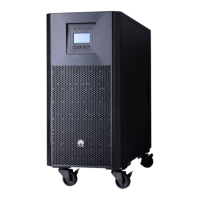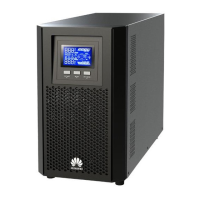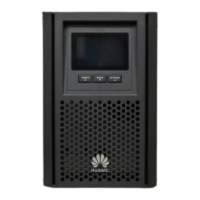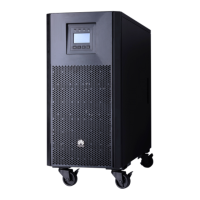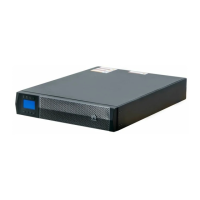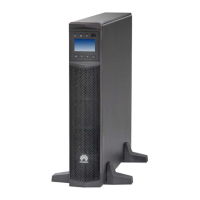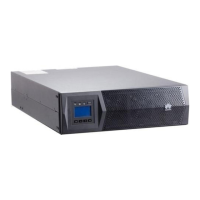UPS2000-A-(6 kVA-10 kVA)
User Manual
Copyright © Huawei Technologies Co., Ltd.
Wrap tools with insulation tape to prevent electric shock.
Protect your eyes with relevant devices and apply other protective measures.
Wear rubber gloves and a protective coat in case of electrolyte overflow.
When moving batteries, avoid handling the battery upside down, handle batteries gently,
and pay attention to personal safety.
Keep the battery switch off when installing or maintaining the batteries.
7.2.1 Precautions
Before battery maintenance, get the tools, such as handles, insulated. Do not place metal
tools on exposed battery terminals.
Never use any organic solvent to clean batteries.
Never try to remove the safety valve or fill anything into batteries.
Never smoke or use fire around batteries.
After battery discharge, charge batteries within 24 hours to ensure a required battery
capacity.
Only professionals are allowed to perform maintenance tasks.
7.2.2 Monthly Maintenance
Table 7-4 Monthly maintenance tasks
No battery alarm is
generated.
Identify the cause based on the alarm
information.
1. The battery shell is
intact, without acid
leaks, deformation,
or bulges.
2. The battery is free
from dust or dirt.
1. Take photos of any deformed or faulty
parts of batteries.
2. Check and record the charge voltage and
current of the battery string as well as the
voltage of each battery.
3. Check the battery surface temperature.
4. Keep deformed and bulged faulty batteries
still for 30 minutes and then check and
record open-circuit voltage of the faulty
battery.
5. If the fault persists, contact Huawei
technical support.
Battery
operating
temperature
1. The service
temperature of a
working battery
does not exceed
45ºC.
2. The battery ambient
temperature is
25±5°C.
1. Identify the cause of the abnormal battery
operating temperature.
2. If the fault persists, contact Huawei
technical support.

